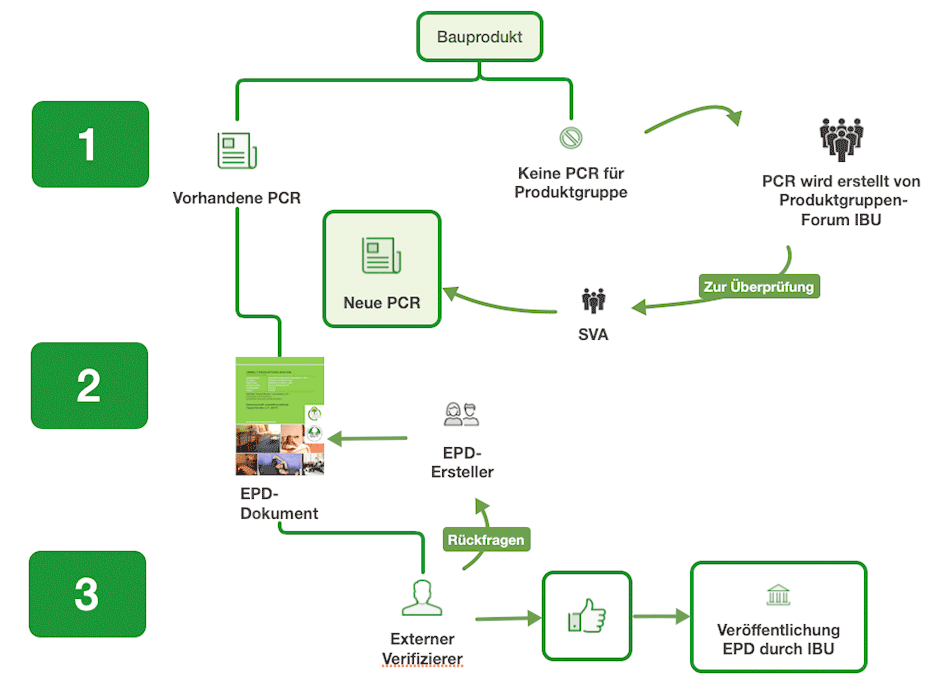Environmental Product Declarations (EPD)
for textile floor coverings
EPDs provide transparent, independent (third party verified), and understandable information regarding the environmental impact of many products in the construction sector, including textile floor coverings. EPDs therefore provide invaluable support to key decision-makers from planners and architects to building owners regarding the life cycle assessment of a textile floor covering.
What is an EPD?
(Environmental Product Declaration in Detail)
Product-related EPDs
As well as generic EPDs of ‘typical’ types of textile floor coverings, GUT also prepares product-specific EPDs for individual manufacturers. Each EPD is based on the same harmonised PCR information therefore the environmental impacts of each product is transparent, independent, understandable and comparable. By using the IBU format, the EPDs comply with future EU standards and are valid throughout the EU. The EPDs can be used by planners, architects, construction companies, building owners and other experts to assess the sustainability of buildings.
GUT has been responsible for the development of EPDs for over 10 years and, to date, more than 350 product specific EPDs have been published. Therefore, numerous expert opinions based on LCA data have been carried out across the industry on the impact of different raw materials, production processes and methods of disposal. For the French market, so-called FDES documents (Fiche de Déclaration Environnementale et Sanitaire = Environmental and Health Declaration) are also being prepared.
PDF-Download EPDs for textile floor coverings
How is an EPD created?
The three steps to an EPD
Step one:
A forum of experts and manufacturers for a specific product group is set up and a draft document for the PCR (Product Category Rules) is prepared. The product is defined and the typical environmental impacts expected are identified. Simultaneously, the public and any other interested parties will be informed and asked for input which will be incorporated into the initial draft. This will be checked for consistency between the experts and manufacturers to ensure it meets all requirements. If there is already a PCR document for the relevant product group, this stage will not be necessary.
Step two:
At this point, the manufacturer provides all the information required for the PCR document together with evidence of the tests completed. The PCR also acts to regulate the test procedures and LCA methodology. Once this is completed and checked, the EPD is created.
Step three:
The EPD is examined by an ‘Expert Committee’ and then each individual EPD is verified by an independent third party to ensure that the information is objective and accurate. The programme holder, IBU (Institut für Bauen und Umwelt e.V.), does not have any influence over the EPD results, but only publishes the declarations that have been accepted from the expert committee. All currently valid EPDs (published by IBU) can be found on the IBU website and in the EPD-Online Tool after you have registered there free of charge.
Simplified overview of the development of an EPD
